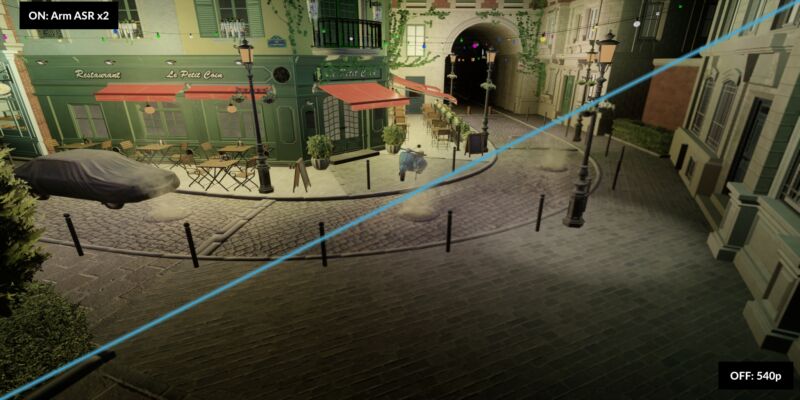Arm tweaks AMD’s FSR to bring battery-saving GPU upscaling to phones and tablets

Enlarge / An Arm sample image meant to show off its new "Accuracy Super Resolution" upscaling tech. (credit: Arm)
Some of the best Arm processors come from companies like Apple and Qualcomm, which license Arm's processor instruction set but create their own custom or semi-custom CPU designs. But Arm continues to plug away on its own CPU and GPU architectures and related technologies, and the company has announced that it's getting into the crowded field of graphics upscaling technology.
Arm's Accuracy Super Resolution (ASR) is a temporal upscaler that is based on AMD's open source FidelityFX Super Resolution 2, which Arm says allows developers to "benefit from the familiar API and configuration options." (This AMD presentation from GDC 2023 gets into some of the differences between different kinds of upscalers.)
AMD's FSR and Nvidia's DLSS on gaming PCs are mostly sold as a way to boost graphical fidelity-increasing frame rates beyond 60 fps or rendering "4K" images on graphics cards that are too slow to do those things natively, for example. But since Arm devices are still (mostly, for now) phones and tablets, Arm is leaning into the potential power savings that are possible with lower GPU use. A less-busy GPU also runs cooler, reducing the likelihood of thermal throttling; Arm mentions reduced throttling as a benefit of ASR, though it doesn't say how much of ASR's performance advantage over FSR is attributable to reduced throttling.